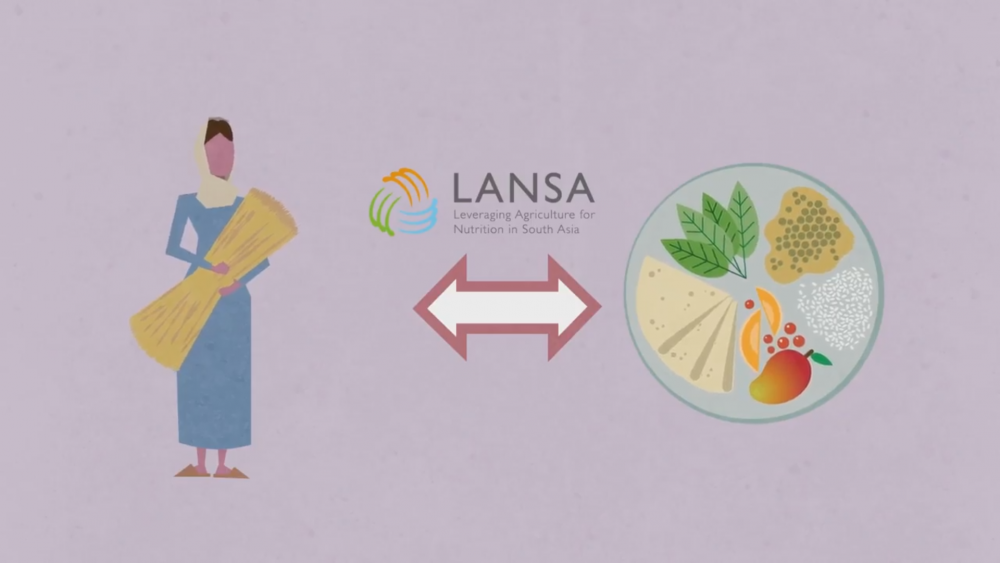Half the world’s farmers are women. In South Asia the proportion is far higher than this, in Afghanistan for example women farmers make up over 80 per cent of the agricultural workforce. Day to day, women spend an equal amount of time in farming as men and do very labour intensive jobs. However they are often paid far less than their male counterparts.
For International Women’s Day 2017, LANSA has created a short animated film highlighting these issues which will be used in each of the focus countries to bring our research and recommendations to policymakers, encouraging them to #BeBoldForChange and to be bold for nutrition.
The work burden for women and its consequences
In addition to the demanding agricultural labour, household domestic chores such as cooking, cleaning and carrying water and also childcare and care of the sick or elderly are seen almost exclusively as a woman’s job. Research from the Leveraging Agriculture for Nutrition in South Asia (LANSA) programme shows that in India women tend to spend more than four hours per day on domestic and childcare activities in addition to their work in the fields.
This extra work burden has a number of significant consequences for the nutrition of women and their children.
The demanding work hours and physical labour contributes to the high proportion of women in South Asia who are underweight. LANSA research in Pakistan shows that women who work in agriculture were almost three times as likely to be underweight than women who were not working.
With their mothers spending much of their time in the fields, children are less likely to be fed regularly and thus children whose mothers work as farmers are more likely to be undernourished.
Empowering women to improve nutrition
LANSA evidence indicates that empowering women improves the nutritional status of their children.
For example, an empowered woman working in agriculture may improve her bargaining power within the household, giving her an increased role in household decision-making, with women more likely to make positive choices around nutrition for themselves and their children.
For each of the LANSA focus countries, there are different challenges to be addressed:
- In Pakistan, women’s role in agriculture is largely unrecognised. Formal recognition of the contribution of women in the agricultural sector is needed along with policies which address the work/care trade-off.
- In India, policies around women in agriculture do exist but are yet to be successfully implemented. There is also a motion to introduce women friendly tools to reduce some of the burden of labour intensive jobs.
In Bangladesh, women should be given full, equal access to and control over agricultural loans.However, in all countries, at the minimum the provision of support services like ante- and post-natal care and subsidised child care centres would lessen the burden on women in the agricultural labour force. Ultimately, this would pave the way for better maternal and child nutrition, leading to a stronger, healthier and more productive population.
This blog is based on the research conducted under LANSA which was used to create the animated film.
This blog is re-posted with permission from the Intsitute for Development Studies blog, available here.

